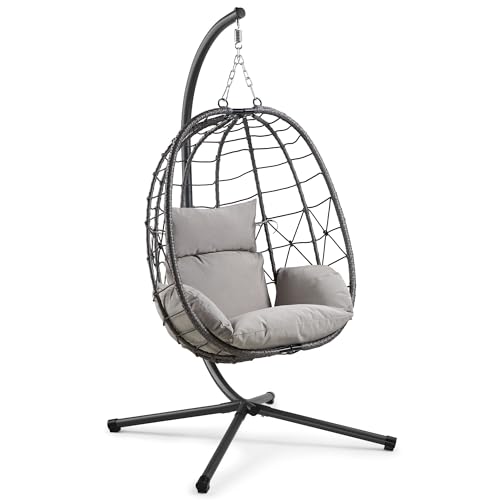These 13 real-life loft balcony ideas turn overlooked spaces into the best seat in the house
From Juliet balconies to rooftop retreats, these expert-approved ideas show how to add style and space to your loft conversion with a balcony that works year-round
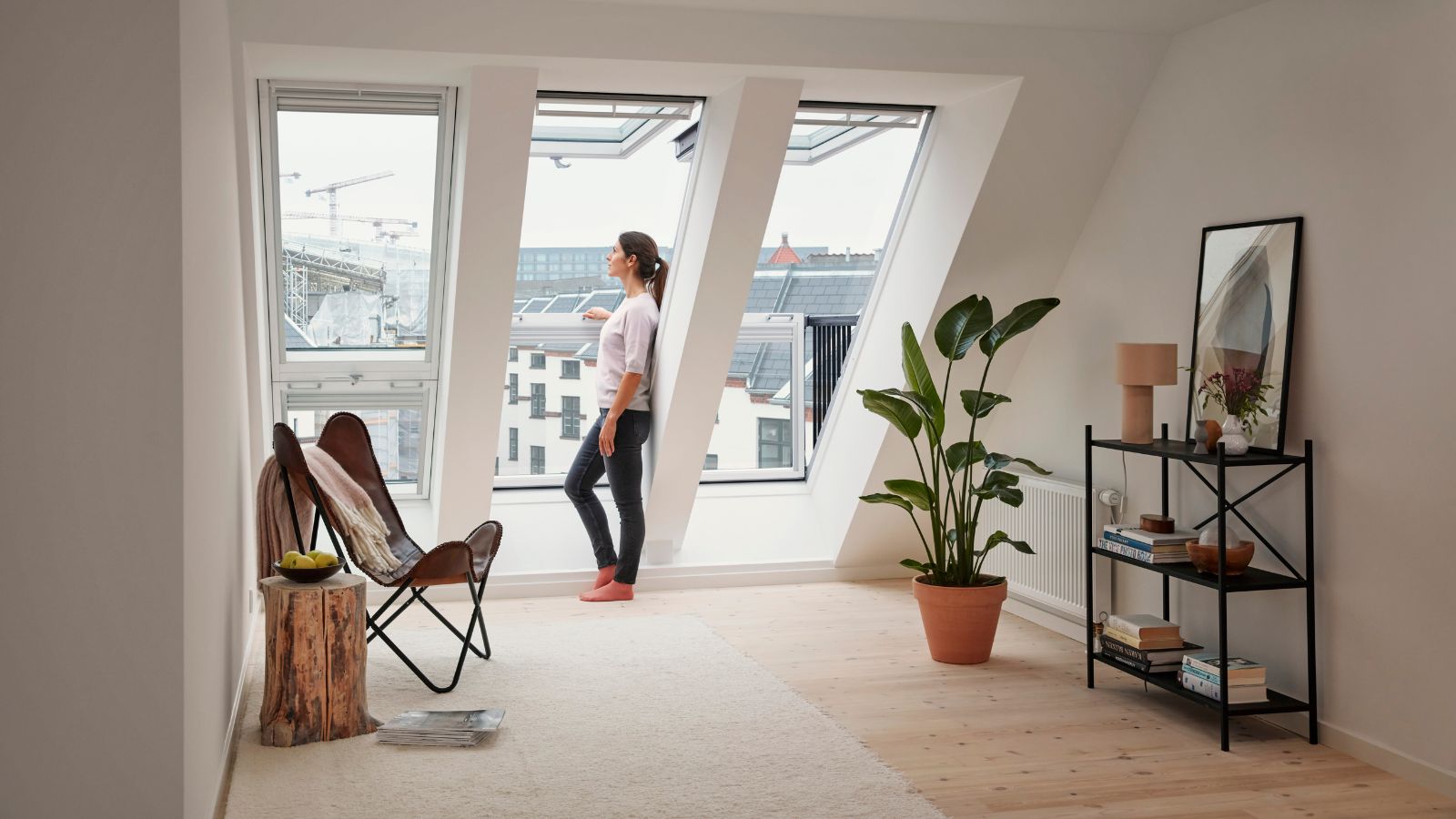
From privacy and planning permission to structure and access, there’s more to bringing your loft balcony ideas to life than first meets the eye. Whether you’re dreaming of a rooftop terrace for morning coffees, a Juliet balcony to let fresh air in, or something in between, it pays to think about the practicalities as well as the prettiness.
When planning a loft conversion balcony, your choice of layout, glazing and materials will all shape how the space looks and works throughout the seasons. Below, you’ll find expert advice and clever loft balcony ideas to help you design a space that suits your lifestyle, with plenty of real-life inspiration to guide you.
1. Introduce a simple Juliet balcony
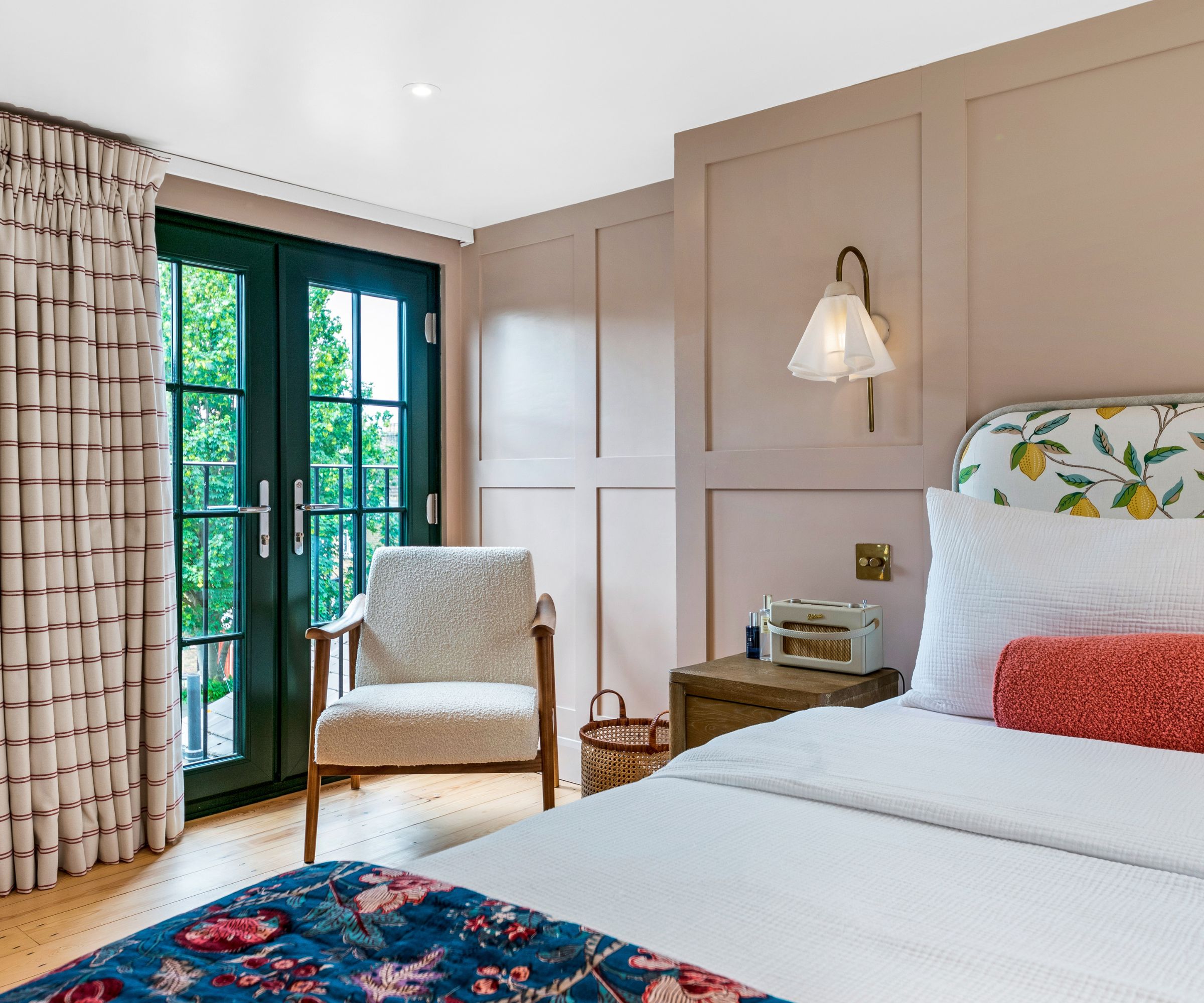
“The term ‘Juliet balcony’ is slightly misleading, as it’s not strictly a balcony – at least not in the sense that you can walk out onto it, since it doesn’t extend outwards,” explains Natalie Mitchell, property and construction expert at HomeHow.co.uk. “Instead, it’s built across the width of an opening, usually containing French doors, and acts more as a guard rail than an outdoor space.”
That said, while these structures may be modest, their impact on a loft conversion can be anything but. “Clients love Juliet balconies because they bring in maximum natural light and a feeling of openness without the need for extensive structural changes,” adds Rob Wood, managing director at Simply Loft. "They're also a smart choice where budgets or planning restrictions rule out a full roof terrace."
And if you're working with a small loft conversion where space is tight or external access isn’t feasible, a frameless glass Juliet balcony can be a brilliant way to maximise the sense of openness. “It allows you to enjoy the natural light and ventilation in your loft conversion that you otherwise wouldn’t have,” says Natalie Mitchell. “And depending on your location, it also affords the opportunity for a nice view."

Simply Loft are one of London’s leading loft conversion specialists, originally founded by Rob Wood and his wife Helen in 2010, after setting up Simply Extend in 2008. It started with a vision of creating a domestic or residential building company that would focus on delivering home improvement including kitchen extensions, loft conversions and more recently basement conversions.
Natalie Mitchell has worked as a property and construction expert for HomeHow for five years and has worked in the construction industry for over twenty years. Natalie continues to work on building projects while also providing expert construction and property advice to industry professionals and DIY enthusiasts.
2. Opt for a compact box balcony for a modern edge
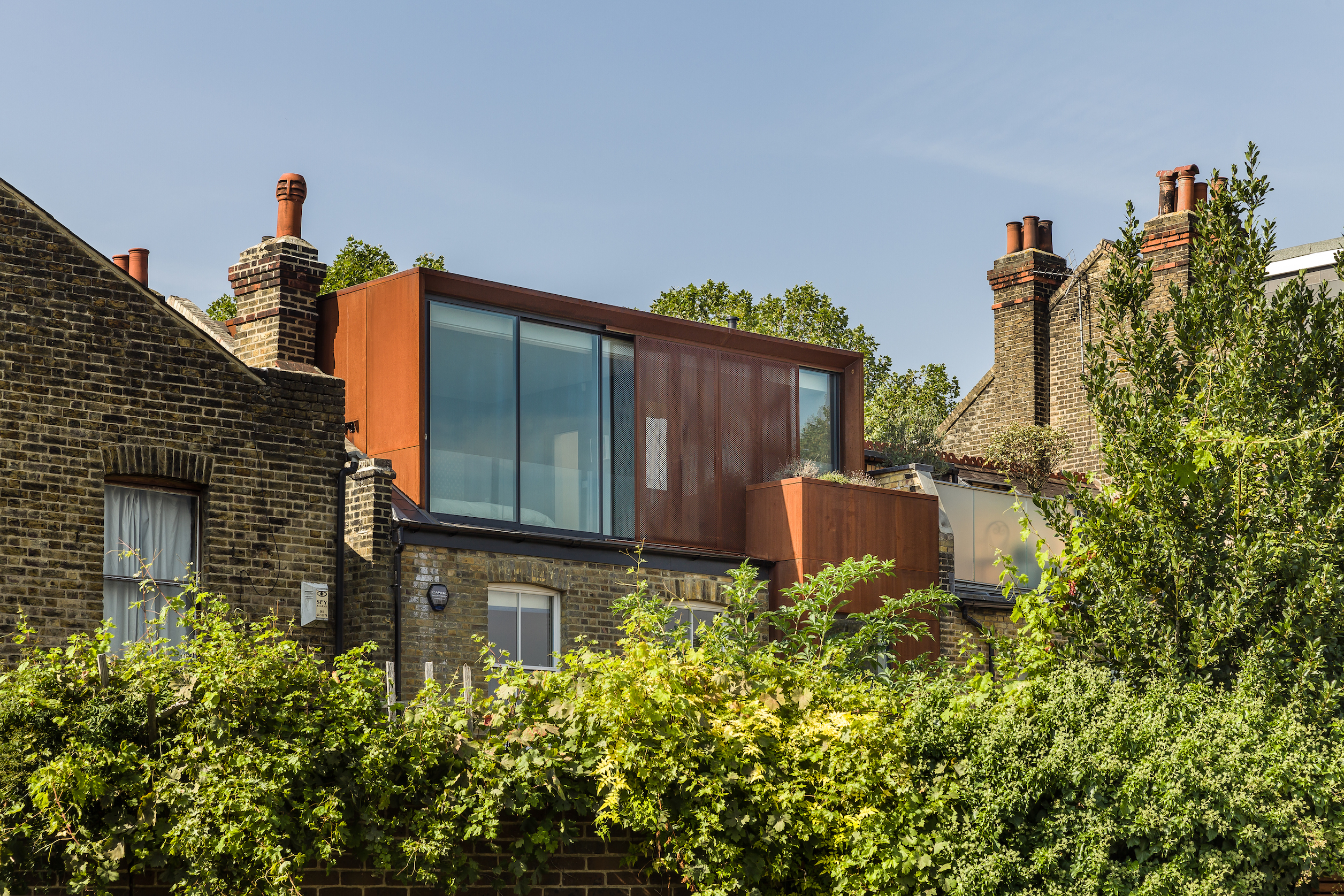
Planning a mansard loft conversion? A box-style balcony could be just the thing to give it a contemporary edge. These compact structures add instant kerb appeal and prove that even a modest footprint can deliver serious impact. Think about cladding your box balcony in a standout material, like the warm-toned corten steel pictured here, or adding a perforated privacy screen to filter light while keeping things discreet. A built-in planter will help to soften the lines with greenery and make your space feel that bit more lived-in and inviting.
3. Frame your views with full-height glazing

“We’re seeing a growing trend among homeowners looking to maximise light, airflow and access to outdoor space in their loft conversions,” says Rob Wood, MD at Simply Loft. For this reason, large expanses of full-height glazing are a clever design choice, especially when the view is a large part of the appeal.
Bring your dream home to life with expert advice, how to guides and design inspiration. Sign up for our newsletter and get two free tickets to a Homebuilding & Renovating Show near you.
In this loft bedroom by Paul Archer Design, expansive sliding glass doors open directly onto a roof terrace, creating a seamless connection between inside and out. The minimal frames and generous panes not only elevate the room’s aesthetic but also allow the landscape to become part of the interior scheme.
4. Discover the many benefits of a VELUX roof balcony
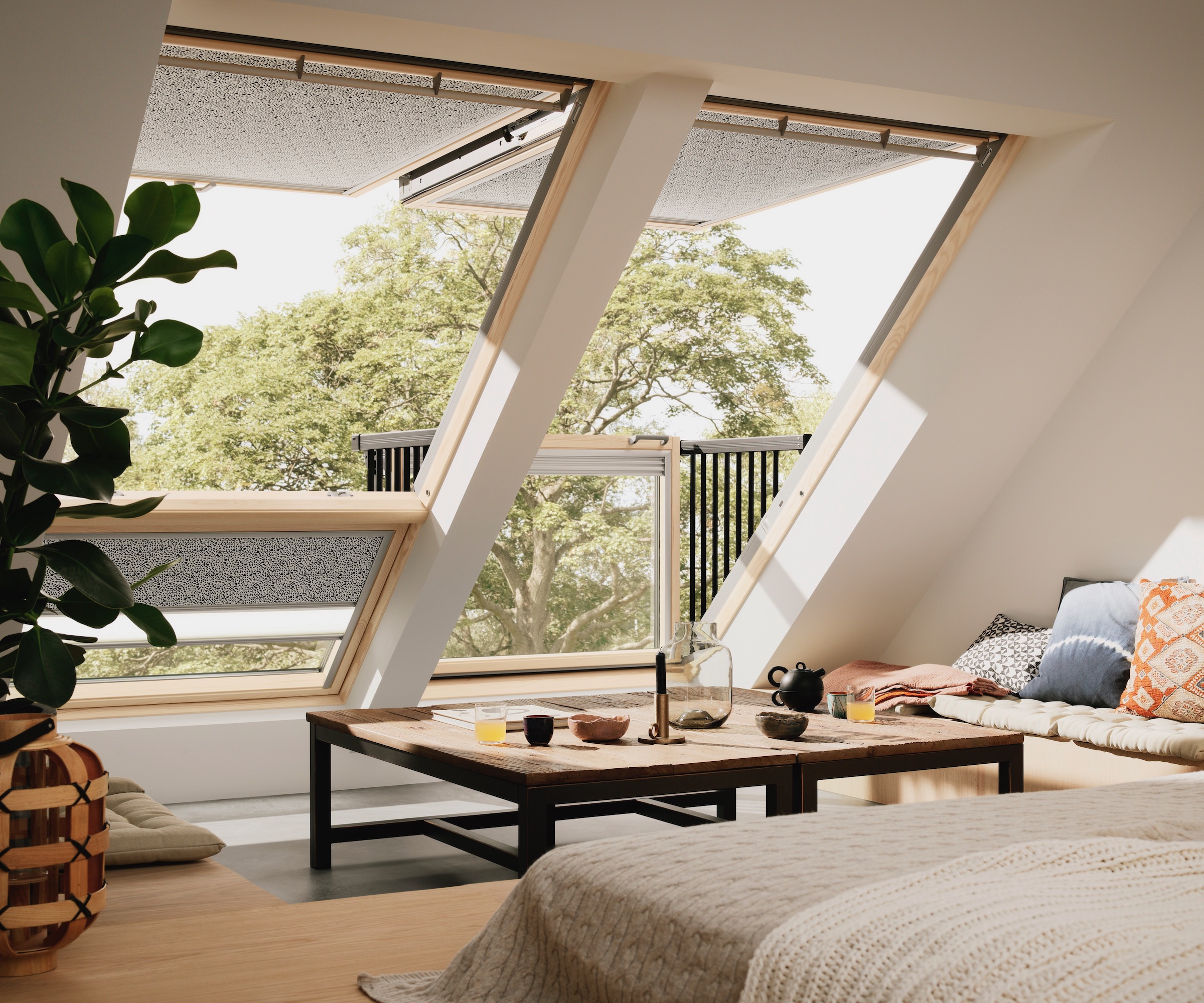
"VELUX roof balconieslook, at first glance, just like a standard loft conversion window,” explains Natalie Mitchell from HomeHow. “But once the top section is open, the lower half lifts out to form a small balcony with built-in side guard rails. The whole system is lightweight, easy to operate, and offers generous headroom, natural light and ventilation – plus a lovely view if you're lucky.”
If you’re considering a Velux loft conversion, early planning is essential. “The VELUX balcony measures 2520mm down the roof and is available in two widths – 940mm and 1140mm – so it’s important to check it fits your space,” says Barbara Entwistle, project development manager at VELUX. “It also requires a roof pitch between 35° and 53°, and may need planning consent due to its outward-opening design.”
Barbara adds that for homes in picturesque spots, pairing the balcony with a top-hung and fixed window can amplify the effect. “The top-hung version is 1600mm high and offers a wider angle of view, ideal for making the most of the scenery,” she says.

Barbara is project development manager at VELUX. VELUX was founded in 1941 and today manufacture a range of roof windows, including sun tunnels, roof balconies and terrace.
5. Turn a skylight balcony into a mini green retreat
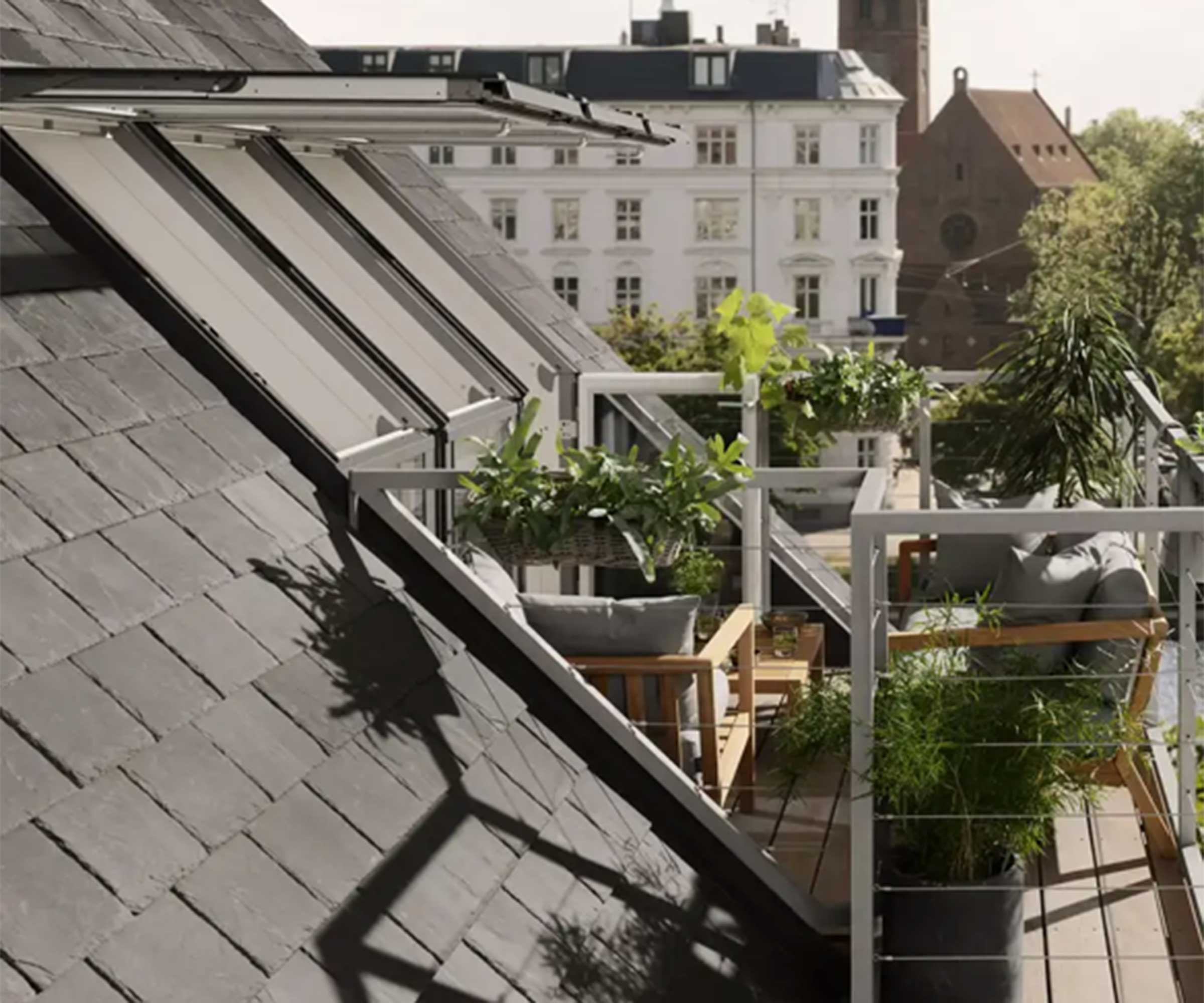
Just because your loft balcony sits high above the bustle of the street doesn’t mean it can’t feel calming and green. Designed by VELUX, this elevated spot uses layered planting to brilliant effect, combining leafy climbers, upright grasses and architectural pots to break up hard lines and create an oasis-like feel. The placement of greenery adds some much-needed softness to the angled roofline and modern balustrades, and is an easy way to inject life and personality into a compact space.
6. Embrace a full length balcony to make your bedroom feel twice the size
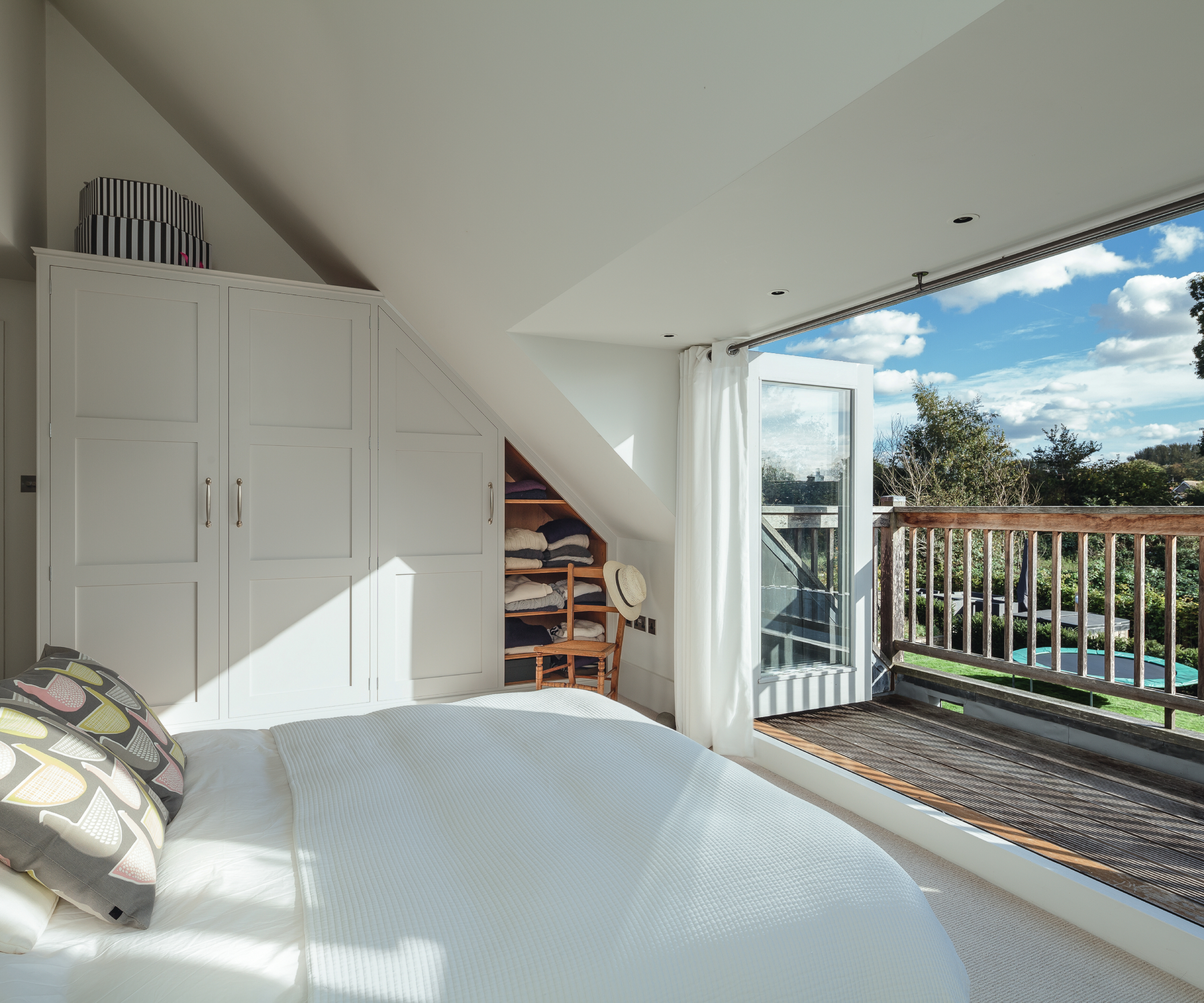
There’s something effortlessly luxurious about opening the doors to your own private balcony, and in a loft bedroom it can completely change the way the space feels. In the room pictured above, full-height French doors let in plenty of light while the timber-decked balcony offers a calm spot to sit and soak up the garden views.
Whether you’re overlooking rolling countryside or a compact urban garden, this kind of setup brings a genuine sense of connection to the outdoors and instantly elevates the room, making it feel more five-star boutique than simple home extension.
7. Get the details right with durable materials and privacy screening
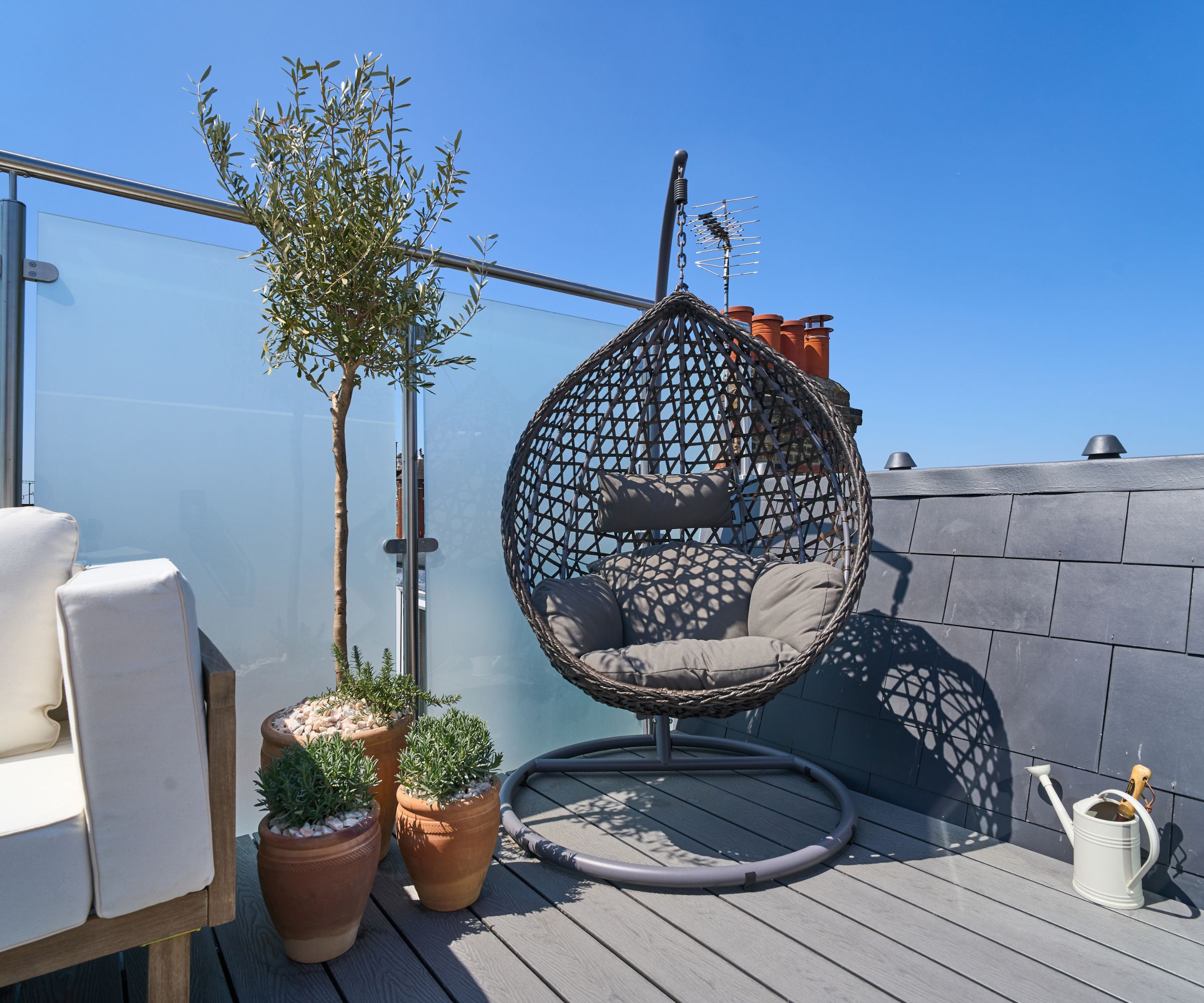
The success of a loft balcony lies in the details. When it comes to furnishing these elevated spaces, Rob Wood recommends prioritising practical considerations like privacy and exposure to the elements. "Subtle screening or planting can enhance the space without blocking light," he explains.
To make your balcony feel more comfortable and weather-ready, choose lightweight furniture made from rust-resistant materials such as powder-coated aluminium or all-weather rattan. Pair these pieces with non-slip decking designed specifically for outdoor use. For the colder months, a waterproof storage bench or a slim wall hook for blankets can make all the difference; small touches like these help ensure your outdoor space stays inviting all year round.
8. Add privacy with frosted glass balustrades
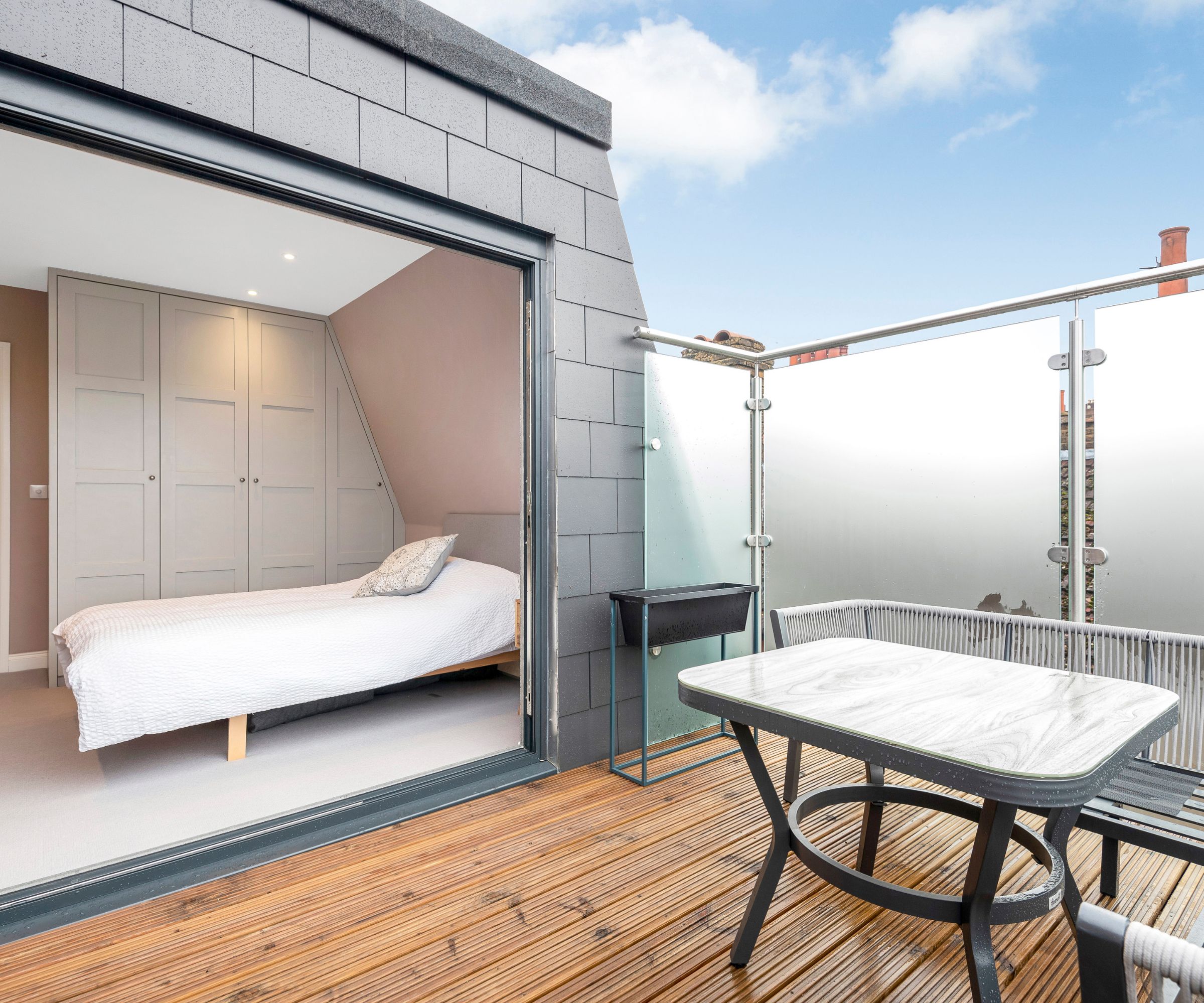
If your loft balcony is likely to overlook neighbouring properties, consider introducing a frosted glass balustrade to provide your space with a little privacy, without blocking light in the process.
“Frosted or opaque glass panels work well in tighter urban environments where there are privacy concerns,” explains Sally McClean, loft conversion specialist at Rooftop Rooms. “They still let in plenty of natural light and help define the space without it feeling boxed in.”

Sally McClean has been with Rooftop Rooms for over 15 years, bringing a wealth of experience in loft conversions to her role as Manager. She combines her deep industry knowledge with a focus on providing the administrative support that ensures every project is a success.
9. Choose low-profile furniture to make your balcony feel more spacious

“Modular seating works really well on loft balconies,” says Rob Wood, MD at Simply Loft. “It allows you to fit the pieces around your space without it feeling cramped.” In this stylish roof terrace, a low-backed corner sofa keeps the view uninterrupted and the atmosphere laid-back, while a round coffee table offers practical surface space without crowding the area.
Choosing light-toned fabrics for your outdoor sofa will help bounce sunlight around, making even the smallest of loft balconies feel that bit brighter and more open. Add a couple of small potted trees or soft greenery to zone the area and create the relaxed feel of a garden room, even in an elevated setting.
10. A glazed hatch is a sleek, space-saving way to reach your loft terrace
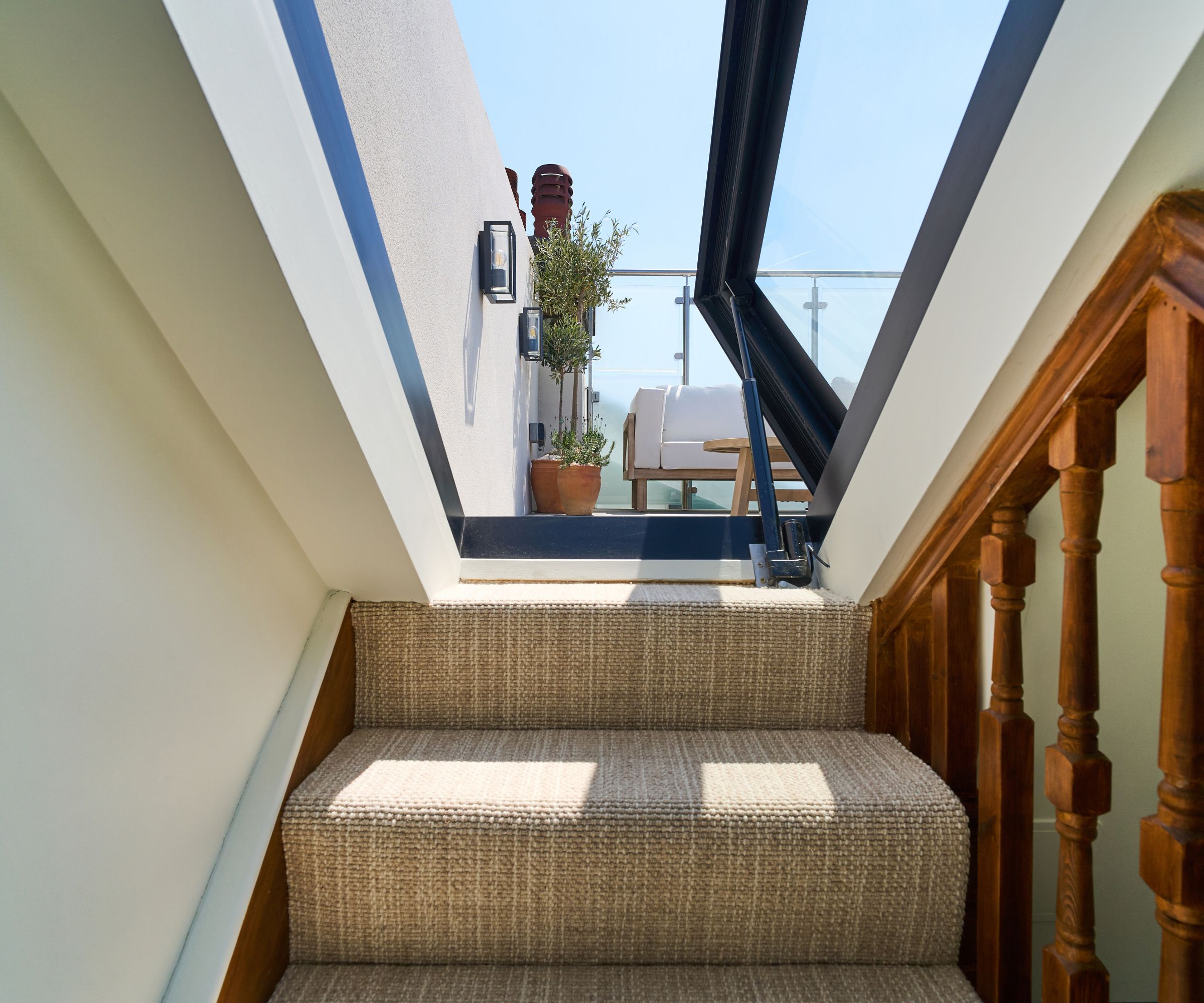
If you’re working with a flat roof or tucked-away loft layout, finding a smart way to access your space is essential. A glazed hatch, like the one shown here, offers a seamless way to step straight out onto your balcony without eating into valuable floor space. It keeps the interior feeling light and open, and looks incredibly slick too.
But that’s not the only design trick to consider. “Combining split-level loft conversions with a terrace creates space for multiple living areas,” explains Sally McClean, loft conversion specialist at Rooftop Rooms. By dropping the terrace to a slightly lower level, you can create a more dynamic layout that feels like an extension of the home rather than just a rooftop add-on.
11. Use bi-fold doors to open up the entire wall
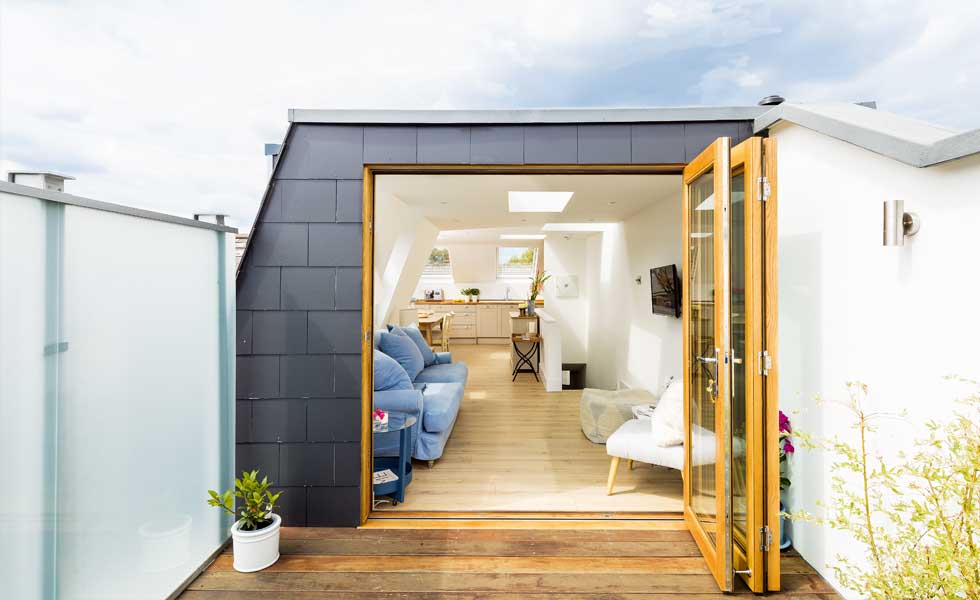
Your choice of doors will shape everything from the light levels to how your loft space feels day to day. “You can choose anything from hinged French doors to sliding doors or bi-folding panels secured with a Juliet balcony,” says Natalie Mitchell, property expert at HomeHow. “The right option will depend on the size of your conversion, your budget, and any planning restrictions – especially if the property’s in a conservation area.”
In the inviting setup pictured above, full-width sliding doors create a seamless transition to the balcony space, turning it into a true extension of the living room. If you're working with a similar footprint, bifold doors are a brilliant choice for creating a sense of flow between indoors and out; just make sure you consider the swing clearance and whether you’d prefer the panels to open inwards or outwards, depending on how you use your space.
12. Don't be afraid to play with height for added drama
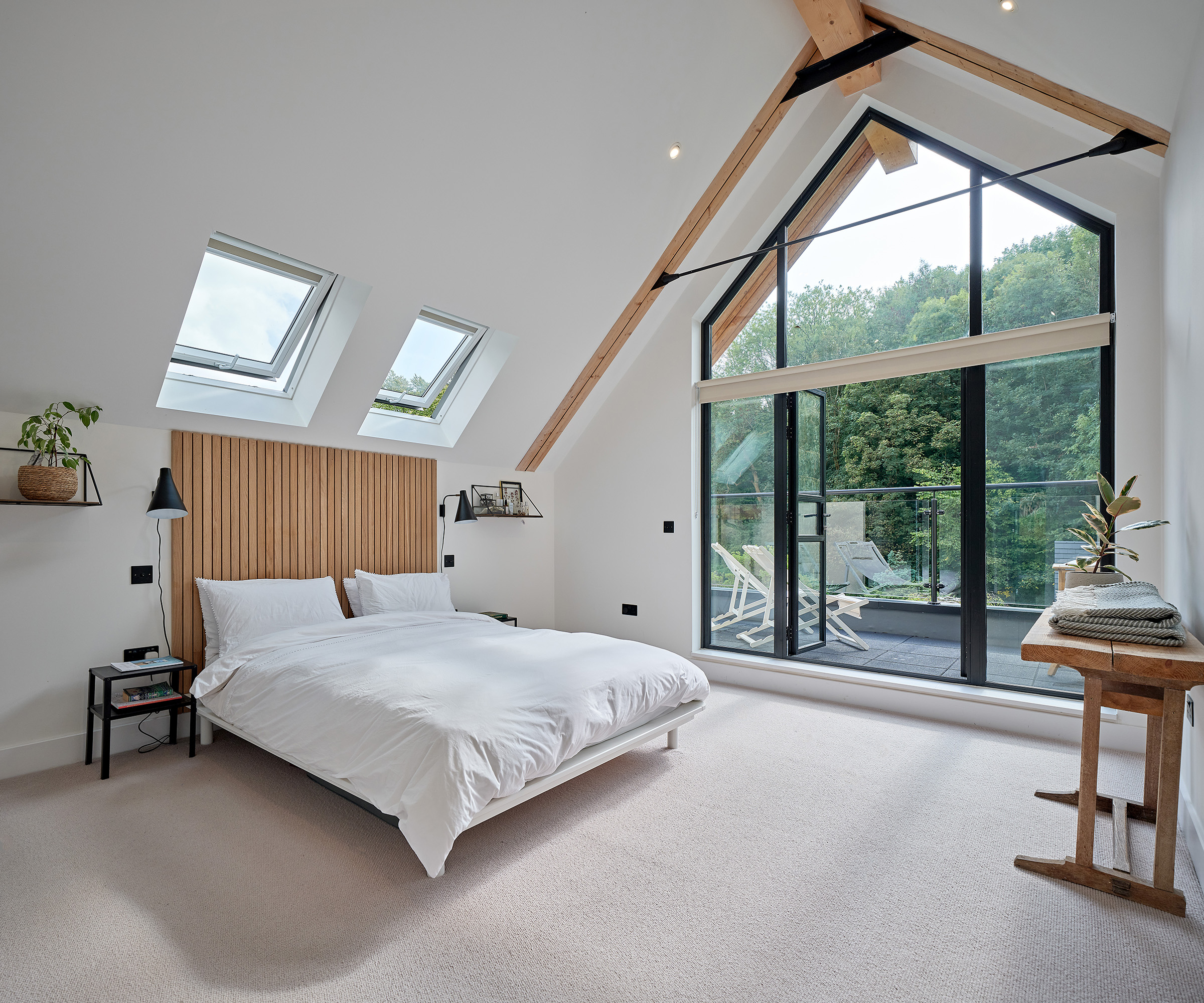
A loft conversion with a pitched roof might seem like a challenge at first, but it can open the door to some seriously impactful designs. In this striking loft conversion, the full-height gable glazing becomes a standout feature, drawing the eye upward and giving the space real presence. Instead of flattening the pitch or working against it, this design celebrates the architecture, allowing you to bring in fresh air and views without compromising on style.
13. Give some consideration to your balcony lighting
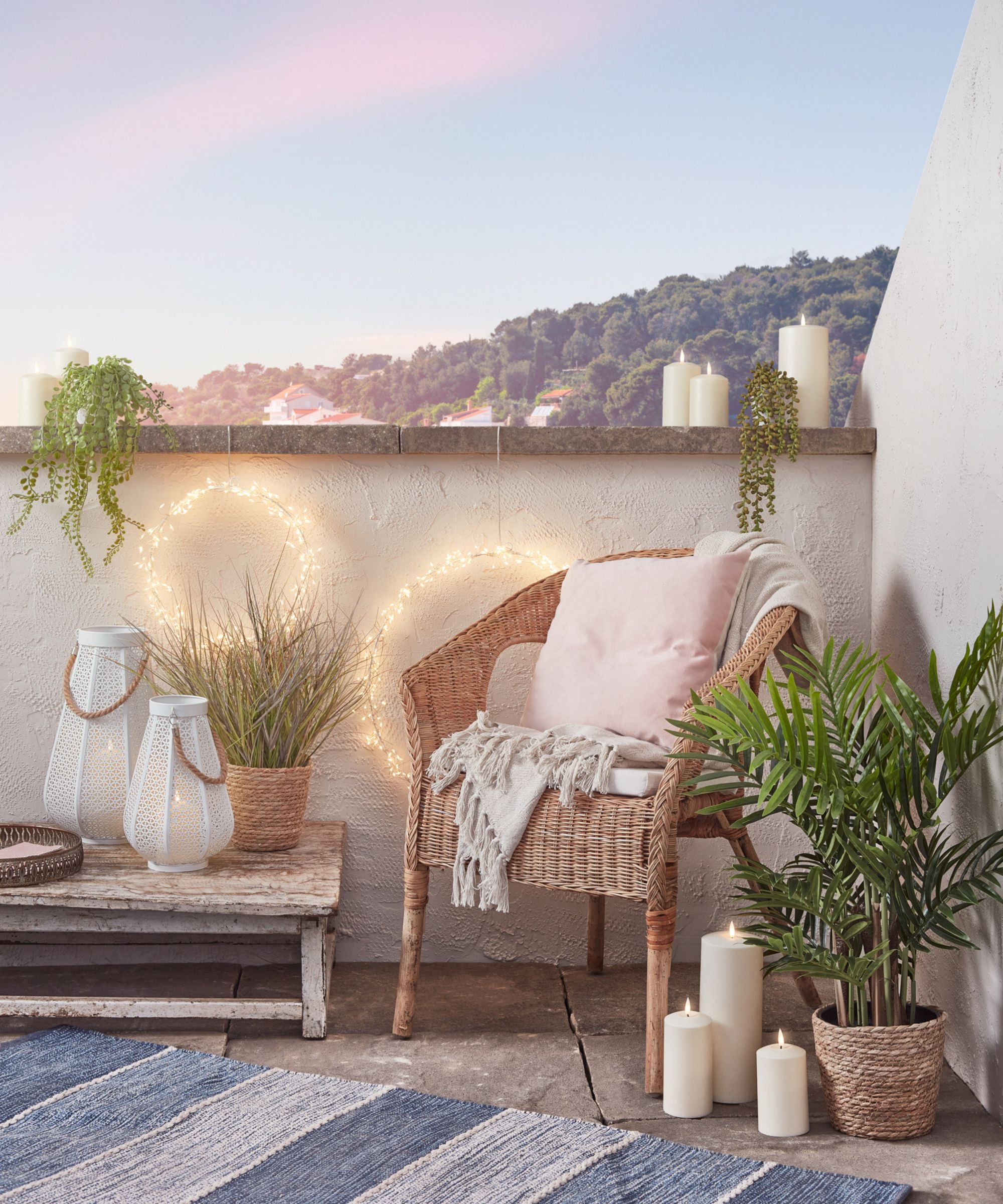
Don’t forget to think beyond daylight hours. The right outdoor lighting ideas can make your loft balcony feel just as inviting in the evening as it does during the day. Treat the space like an extension of your indoor living area, and it’ll become somewhere you’ll want to use year-round.
Wall-mounted sconces, low-level deck lights or a simple string of festoon bulbs can all help set the mood after dark. While you’re at it, consider adding an outdoor socket to power fairy lights, a portable heater, or even a speaker for relaxed sunset wind-downs.
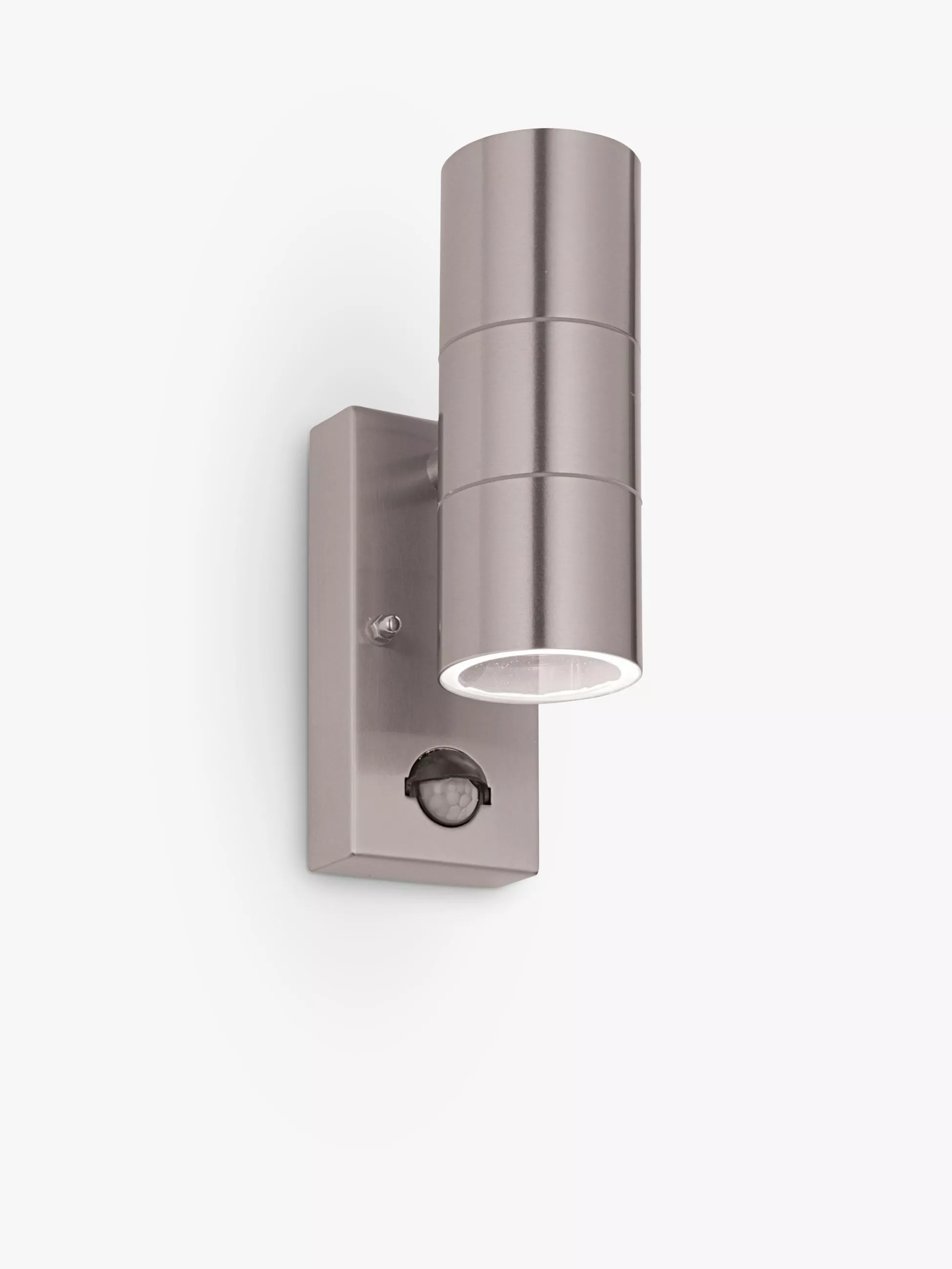

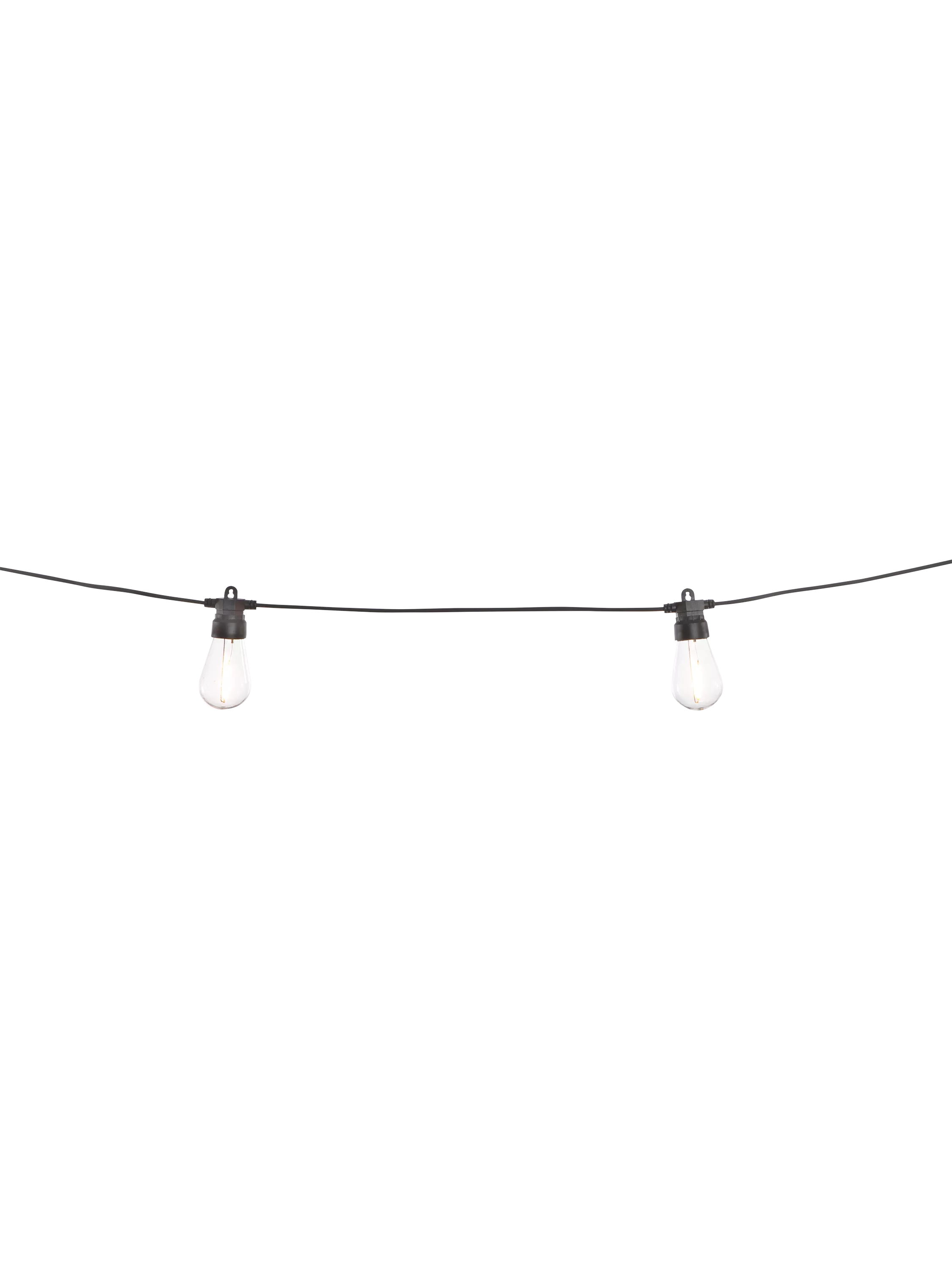
FAQs
Do I need planning permission for a loft balcony?
In most cases, yes. “Building a balcony will always require planning consent,” says Sally McClean of Rooftop Rooms. This is largely due to privacy and overlooking concerns, so expect to submit a strong supporting statement as part of your application. Planning restrictions may also be tighter in conservation areas, where, as Sally notes, “you may not be able to achieve the look you’re initially planning.”
Juliet loft balconies are a simpler, budget-friendly option, as they often fall under permitted development, as they don’t involve external access or significant alterations to the roofline. When in doubt, check with your local authority, especially for anything more complex like a Velux roof balcony or a full roof terrace.
What structural work is needed to add a balcony or a roof terrace?
Adding a loft balcony – especially a roof terrace – involves more structural work than many homeowners anticipate. “A terrace will always require the replacement of the flat roof joists,” explains Sally McClean at Rooftop Rooms. “These must be reinforced to safely support the additional load of foot traffic, furniture and planters.”
Mike Storey at UK Flat Roofing notes that waterproofing is just as crucial: “Rubber tiles, GRP fibreglass or porcelain on pedestals are popular options – but don’t overlook drainage under the surface.”
In most cases, you’ll need a structural engineer to assess the existing roof, calculate load-bearing capacity and provide drawings that comply with building regulations. Even for smaller loft balconies or roof-level platforms, the right structure is essential for safety, longevity and planning approval.
When planning to add a balcony, it’s worth factoring in how it might impact your loft conversion schedule. Structural work, glazing installation and planning permissions can all add time, so speak to your builder early on to stay on track.

Gabriella is an interiors journalist and has a wealth of experience creating interiors and renovation content. She was Homebuilding & Renovating's former Assistant Editor as well as the former Head of Solved at sister brand Homes & Gardens, where she wrote and edited content addressing key renovation, DIY and interior questions.
She’s spent the past decade crafting copy for interiors publications, award-winning architects, and leading UK homeware brands. She also served as the Content Manager for the ethical homeware brand Nkuku.
Gabriella is a DIY enthusiast and a lover of all things interior design. She has a particular passion for historic buildings and listed properties, and she is currently in the process of renovating a Grade II-listed Victorian coach house in the West Country.
